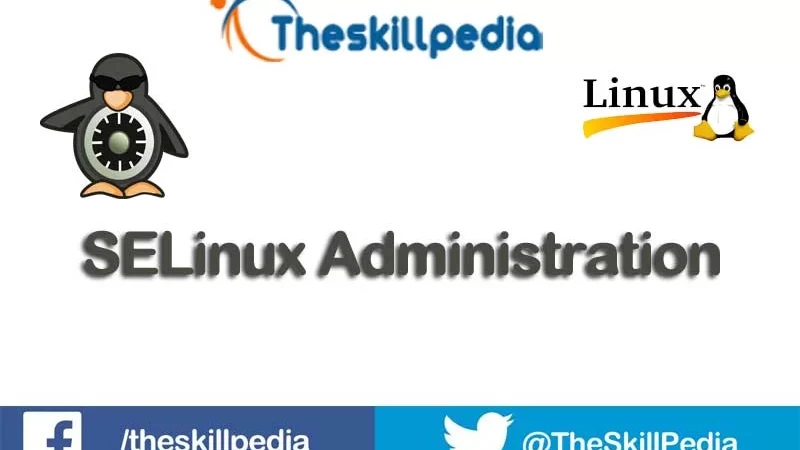SELinux Administration
Session 1. Introduction to SELinux
- SELinux Introduction
- What is SELinux and how it works?
- Access Control Mechanisms
- Labels, Contexts and Type Enforcement
- Basic Terminology
- Users, Roles, Subjects, Objects, Domains and Types
- SELinux Policy and Policy Organization
- Confined and Unconfined Domain, Type Enforcement and Policy Behavior
- SELinux Administration – Settings and Modes
- SELinux Configuration, SELinux Status
- SELinux Features and Benefits
- SELinux is not
Session 2. Getting Started with SELinux
- Boot Options for SELinux
- Enabling user home directories
- SELinux Settings for User Home Directories
- Targeted Policy Protected Services
- Default list of SELinux Protected Services
- File Context for Special Directory Trees
- Setting Persistent SELinux Contexts on Directory Trees.
- Example: ftp server with non default directory
Session 3. SELinux Booleans
- SELinux Booleans
- Why a Service doesn't work?
- Boolean Values
- Service Categories of SELinux Booleans
- Booleans with SELinux Management Tool
- CLI V/s GUI Filter
- Boolean Settings do not stand alone
- SELinux directives for HTTP Services, Name Service, MariaDB, NFS, Samba and SSH
Session 4. Troubleshooting
- Identify the Problem - SELinux Audits
- Using
ausearch
andsealert
- Using
audit2allow
Utility - SELinux Troubleshoot Browser
- The setroubleshootd
- Installation, configuration and working
- Sending e-mails
- Testing setroubleshoot functionality
- Binding sshd on a non standard port
- SELinux Logging - Interacting with systemd-journal
- Policy Rules V/s other Options
Lab 1. Exploring CGI scripts
Session 5. SELinux Policies
- SELinux Policy
- Policy Organization
- Confined and Unconfined Domain
- SELinux Policy Behavior
- Configuring a Policy with semanage
- Example
- SELinux Port Labeling
- Managing Ports with Semanage
- Using Semanage Permissive
- Limiting flows based on the network interface
- Generating Policy files for Deployment
- Handling device files
- Setting a SELinux label on a device node
Lab 2. Understanding policies
Session 6. Working with SELinux Policies
- SELinux Policy Language
- Source Policy Modules in a Monolithic Policy
- Loadable Policy Modules
- Building and Installing Monolithic Policies
- Build and load process for SELinux policy
- The make Targets
- Generating Policy files for Deployment
- Supported user templates with sepolgen
- Handling device files
- Using udev Rules
- Setting a SELinux label on a device node
Lab 3. Modifying an existing policy
Session 7. Building and Loading SELinux Policies
- Downloading and Installing the source and preparing the build area
- Build the base policy package
- Compiling the Monolithic Policy
- Loading the Monolithic Policy
- Compiling Policy Modules
- Loading Policy Modules
- Policy Type-Enforcement Module Syntax
- Policy Type-Enforcement Module Example
Lab 4 Compiling and Building Base Policy from Source
Lab 5 - Using fixfiles Script and Setting mount contexts
Session 8. Working with semodule and Object Classes
- High Level SELinux Architecture
- semodule
- Object Classes and Permissions
- Defining common Permissions
- Examples
Session 9. Policy Utilities
- seaudit, seaudit_report, checkpolicy, sesearch,
- sestatus, audit2allow, audit2why,
- sealert, avcstat, seinfo and semanage
Session 10. User and Role Security
- Role-based Access Control
- Multi Category Security - MCS
- Multi Category Security: translation and login
- The chcat - change file security category
- Defining a SecurityAdministrator: sudo, chcat and root
Lab 6. Role Based Policy Restrictions
Session 11. MLS, Users, Roles, Domain Transition, Macros and Types
- Multi-Level Security - MLS
- The strict Policy
- General Identification
- User Identification: system_u, users_u and root, Declaring Users
- Role Identification - Role Dominance
- Domain Transition
- Polyinstantiation of Directories
- Policy Macros
- Types : Enforcement, Attributes, Aliases and Transitions for Objects
- restorecond
- Customizable Types
Lab 7 Creating a new types
Session 12 Contexts, Policies, Access Vector, Logs and Booleans
- File Contexts
- Manipulating Policies
- Access Vector
- Security Identifiers-SIDs
- Statements: fs_use_* and genfscon
- Context on network objects
- Booleans: Creating and using new booleans
- Enableaudit
Lab 8. Creating Policy Module
Lab 9 Mount Options and Custom port for squid
Project
- Task 1. Create File Contexts, Create File Types, Create File Typealiases
- Task 2. Edit or Create Network Contexts
- Task 3. Domains - Create Domains: Macros, Building and Enhancing
